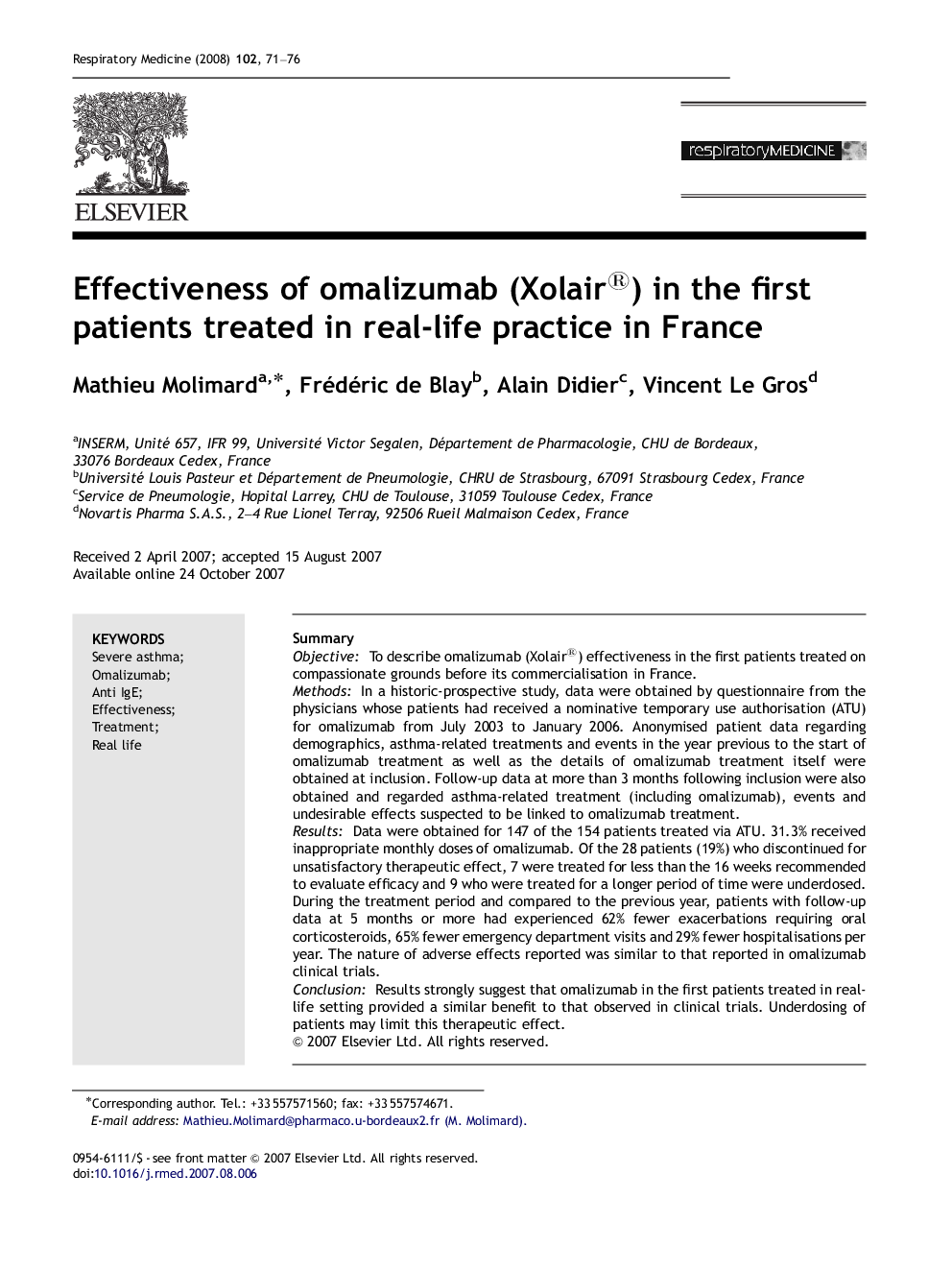| Article ID | Journal | Published Year | Pages | File Type |
|---|---|---|---|---|
| 4211408 | Respiratory Medicine | 2008 | 6 Pages |
SummaryObjectiveTo describe omalizumab (Xolair®) effectiveness in the first patients treated on compassionate grounds before its commercialisation in France.MethodsIn a historic-prospective study, data were obtained by questionnaire from the physicians whose patients had received a nominative temporary use authorisation (ATU) for omalizumab from July 2003 to January 2006. Anonymised patient data regarding demographics, asthma-related treatments and events in the year previous to the start of omalizumab treatment as well as the details of omalizumab treatment itself were obtained at inclusion. Follow-up data at more than 3 months following inclusion were also obtained and regarded asthma-related treatment (including omalizumab), events and undesirable effects suspected to be linked to omalizumab treatment.ResultsData were obtained for 147 of the 154 patients treated via ATU. 31.3% received inappropriate monthly doses of omalizumab. Of the 28 patients (19%) who discontinued for unsatisfactory therapeutic effect, 7 were treated for less than the 16 weeks recommended to evaluate efficacy and 9 who were treated for a longer period of time were underdosed. During the treatment period and compared to the previous year, patients with follow-up data at 5 months or more had experienced 62% fewer exacerbations requiring oral corticosteroids, 65% fewer emergency department visits and 29% fewer hospitalisations per year. The nature of adverse effects reported was similar to that reported in omalizumab clinical trials.ConclusionResults strongly suggest that omalizumab in the first patients treated in real-life setting provided a similar benefit to that observed in clinical trials. Underdosing of patients may limit this therapeutic effect.
